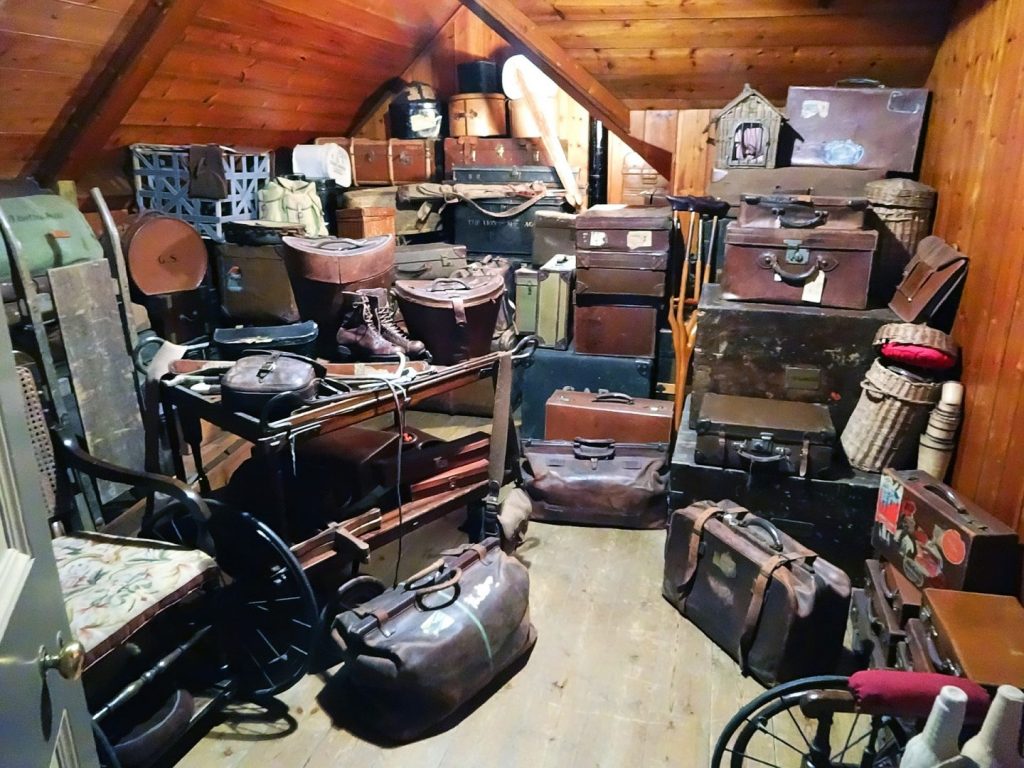
We hang onto many objects from our past to remind us of happy times, because we think we might need them again, because they may have some value, or just because we never let go of them
Remember that old adage about a place for everything and everything in its place? Well, even if everything is put away – and that’s a huge “if” for most people – the chances are big that there’s just too much stuff for many people to be dealing with and managing. How many of us have stuff that we think we need to keep or that we really do want to have but there is not enough place to put them? Whether it’s put away or not is an issue, but the sheer volume of stuff that we maintain is the larger issue.
It’s gotten so that we fill up our closets, dressers, attics, garages, basements, cardboard boxes, file cabinets, lockers, chests, storage boxes and bins, backyard sheds, and even old vehicles that we also are hanging onto for some reason. Then, when all of that is full and we have run out of places to put things other than just leaving them out in the open or stacking them where they will fit, we actually pay a stranger to keep our stuff for us – at a warehouse storage facility. The issue with that is many of us actually forget what is stored there so we are renting space every month just to continue keeping things that we have forgotten about, lost track of, or no longer need. This is a great place to start with our downsizing, decluttering, organing, and minimizing effort – and we can save money also by not renting this space any longer or by going with a smaller unit.
We need to challenge ourselves to begin tossing out, giving away, or using items that we have on hand that aren’t being used by us at the present time. Some are going to be more appropriate to place back into service than others, and some seemingly have no reasonable use for us anymore – sporting equipment for activities that we no longer do, shoes that are worn out or the wrong size (too small or too large), clothing in a style that is not current and may never be again although styles do seem to recirculate to an extent, equipment that is obsolete (cassette tape players or film cameras, for instance), foodstuffs that are past their expiration date (perhaps bought while they were on sale or in bulk from a warehouse club), papers that are yellowed or faded (or in such poor condition that their value to us is questionable), holiday decorations that we no longer use because we have replaced them with updated versions, and the list goes on. At some point, most of what we have stored loses its usefulness.
We are looking at ourselves first and then our clients after that. No one likes to hear that they have hung onto too much stuff or that their home is cluttered – even though it quite likely may be. People don’t want our criticism of the way they live. This is why this is a very delicate topic. When we discuss how people have filled their home and their life with more stuff than is reasonable for them to have in terms of what is important and what is actually usable by them again, they can get quite defensive about it. It’s as if we are attacking their housekeeping so this is a subject that must be approached very skillfully and tactfully.
This is another reason for beginning the process in our own homes. There really are four reasons for beginning the culling process at home: (1) we need to reduce what we are hanging onto because we really don’t need everything we have – we might think we want it, but we don’t have to save much of it, (2) we will have a cleaner home with less stuff to find places for, (3) we can share with our clients what the experience is all about and how we did it, allowing us to empathize with their predicament, and (4) they will have a cleaner, less cluttered space, and (5) by selling stuff at a yard sale, online. or through ads, or by donating it to a charity for their thrift store, both we and our clients will be benefitting the public and allowing someone else to get some use out what is no longer needed by us while cleaning out our homes at the same time.
Let’s set a goal to find places for everything we have that we want to keep and beginning to rid ourselves of things that don’t fit our needs anymore. By adding an extra trash bag each week to include unwanted stuff and making a donation to our favorite thrift store, we can begin to conquer the excess and restore some order to our homes.
